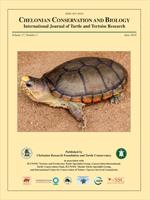The hawksbill turtle (Eretmochelys imbricata) is a critically endangered species with a global distribution and is broadly distributed along the Yucatan Peninsula in the Gulf of Mexico. To complete its life cycle, this species uses sandy beaches with particular environmental conditions that facilitate nesting and hatching. This study aimed to identify if beach physical characteristics influence biological reproductive parameters (hatching and emergence success). Nesting activity was monitored along 18 km of beach in the state of Campeche, Mexico, during 2014. Seventy-eight nests were recorded, 12 physical and environmental variables were measured in the nests and contiguous areas, and the hatching and emergence success of each nest was determined. Beach slope and width had no significant relationship to nest site selection. Nest depth and nest distance to highest tide and vegetation, including vegetation type, did influence hatching and emergence success. Herbaceous and bushy plants were positively correlated with reproductive parameters, highlighting the importance of preserving beach vegetation cover. This parameter was a central structural component of hawksbill nesting habitat, possibly because it influenced nest shading, preventing egg overheating and possible embryo death. Preservation and restoration of vegetation structure on hawksbill nesting beaches is clearly vital to enhancing the reproductive success of this species.
How to translate text using browser tools
31 May 2018
Natural Beach Vegetation Coverage and Type Influence the Nesting Habitat of Hawksbill Turtles (Eretmochelys imbricata) in Campeche, Mexico
Juan Alberto Hernández-Cortés,
Enrique Núñez-Lara,
Eduardo Cuevas,
Vicente Guzmán-Hernández
ACCESS THE FULL ARTICLE

Chelonian Conservation and Biology
Vol. 17 • No. 1
June 2018
Vol. 17 • No. 1
June 2018
– biological reproductive parameters
emergence success
hatching success
marine turtle
nesting process, site selection




